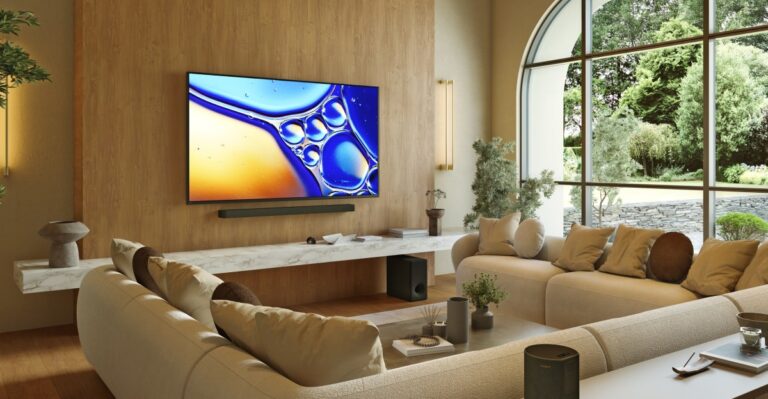Sony Unveils Bravia 8 II OLED: Pricing and Features Revealed
Earlier this month, Sony introduced the Bravia 8 II OLED, a highly anticipated addition to their premium television lineup. While the name suggests a continuation, the Bravia 8 II is actually a spiritual successor to the much-lauded A95L model, offering advanced features and improved performance. With its release set for 2025, this television is positioned to be one of the best options available for home theater enthusiasts.
Pricing Details for the Bravia 8 II OLED
Sony has officially announced that the 65-inch Bravia 8 II OLED will retail for $3,999.99. This price point is $500 higher than the starting MSRP of the A95L, which launched in 2023. Interestingly, the Canadian price of $4,999.99 for this model has remained consistent with its previous pricing from two years ago, which translates to roughly $3,500 in USD when converted, aligning with the A95L’s original pricing in the U.S.
Understanding the Price Increases
The increase in the Bravia 8 II’s price may reflect various factors, including potential tariff impacts imposed during previous administrations. Specifically, President Donald Trump’s tariffs on imports from certain manufacturing countries could affect the final retail cost of these premium televisions. As a result, Sony may be absorbing some of these costs by adjusting their pricing strategy, especially considering that the cost of the 55-inch model has risen even more sharply in the U.S.
A Look at the Bravia 5 and Hardware Upgrades
While the Bravia 8 II OLED offers improvements over its predecessor, comparisons with the newly announced Bravia 5 model are more complex. The Bravia 5 features several hardware upgrades that enhance its performance compared to the older X90L. This model targets consumers looking for solid features without stepping up to the OLED category, yet it still shows price hikes compared to previous versions.
Global Manufacturing Practices
To better understand the pricing strategy, it’s important to note that Sony assembles its televisions in multiple countries. For instance, the Bravia 7 model is manufactured in Mexico, while critical components like the QD-OLED panel for the Bravia 8 II are sourced globally. This widespread assembly and sourcing could influence production costs and the subsequent retail prices.
Retail Pricing and Market Trends
As is typical in the electronics market, initial pricing may not hold as retailers often offer discounts over time. Sony televisions are known for their premium pricing, yet many home theater aficionados are willing to invest in these products due to their exceptional picture processing, advanced upscaling features, and overall viewing experience.
Conclusion: A Promising Future for Sony TVs
With the introduction of the Bravia 8 II OLED and its competitive pricing, Sony continues to solidify its reputation in the high-end television market. As the release date approaches, more information about the Bravia 5 and Bravia 2 LED models will likely emerge. For those looking to upgrade their home cinema setup, Sony’s offerings are sure to remain at the forefront of technology and performance in 2025.
